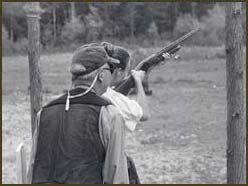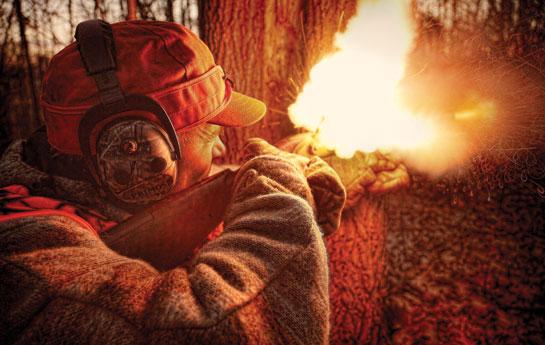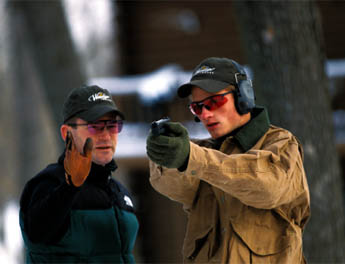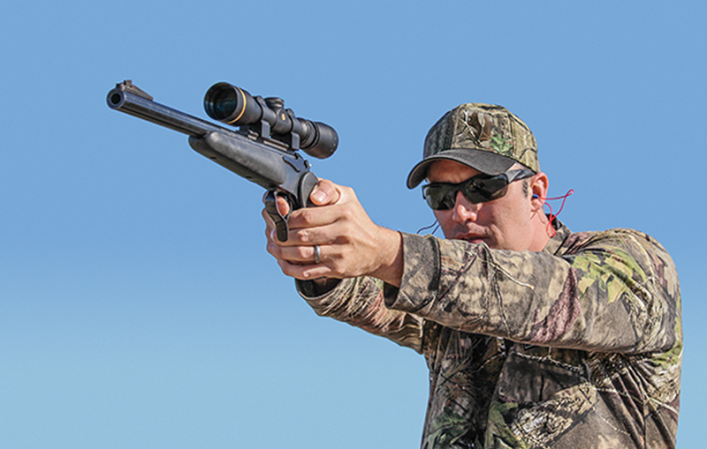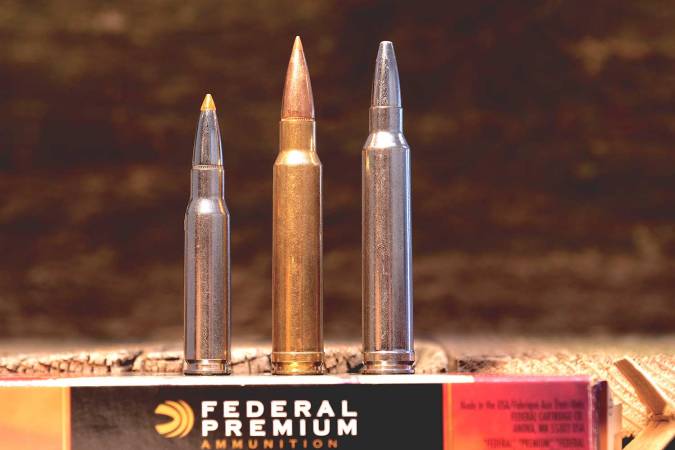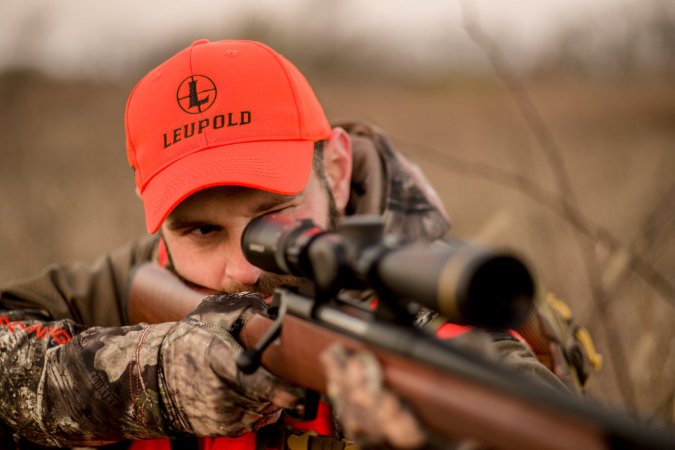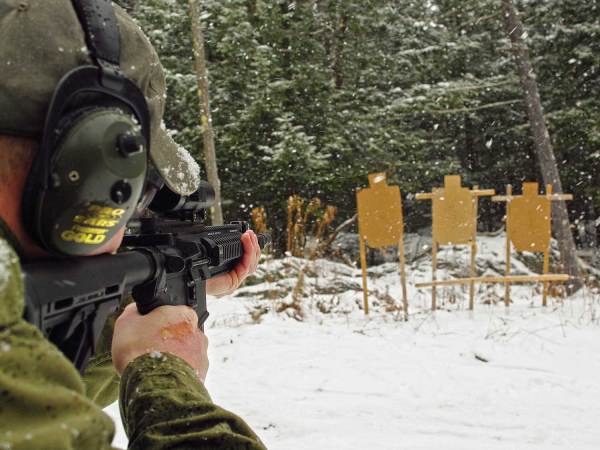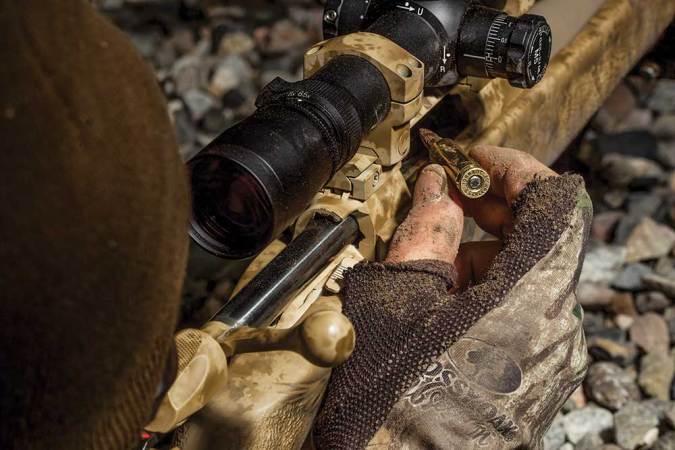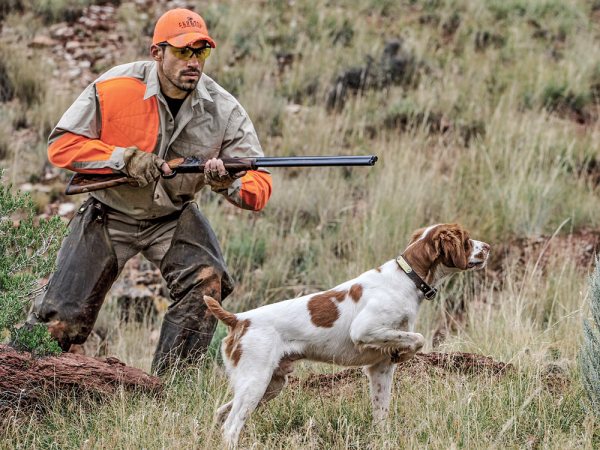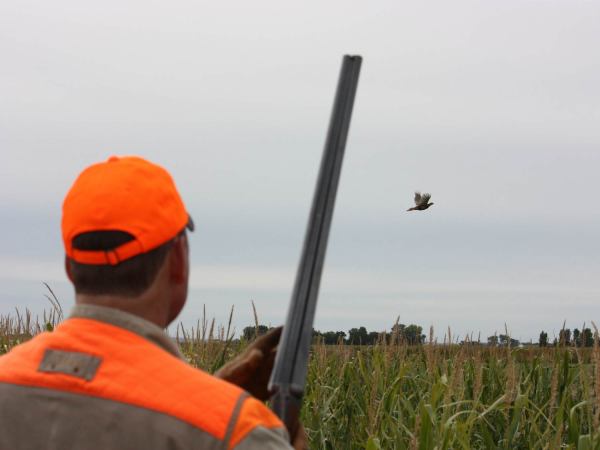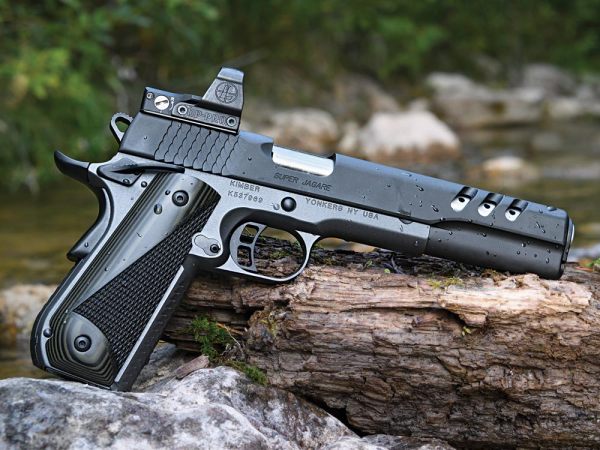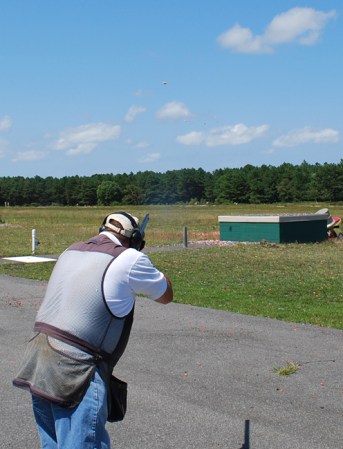We may earn revenue from the products available on this page and participate in affiliate programs. Learn More ›
One of the happiest letters I’ve ever received was from a reader who had finally shed the punishing effects of recoil. In an earlier letter he had
told me how he’d suffered and how he had tried all the recoil pads and kick-reducing gadgets to no avail. Even his .243 rifle kicked so hard it caused him to flinch and miss everything he shot at. He loved shooting but would have to give it up unless I could suggest a workable solution. “No problem,” I wrote. “The pain you’re experiencing isn’t what you think it is. Get some good ear protection and the pain will go away.”
And it did.
Another time, when the Outdoor Life Wing-Shooting Schools were in session, I was approached by a father and son who were on the brink of tearful despair. The dad was a well-to-do executive type who loved bird hunting and dreamed of traveling with his son to the world’s bird hunting hot spots. Their problem was that his twentysomething son simply couldn’t hit anything with a shotgun. Even after endless practice rounds of skeet and sporting clays, and dozens of hunting trips, the only time the son could connect on a flying target was by accident.
“Hang the expense,” the father intimated. “Teach my boy to shoot and I’ll be a happy man.”
My first guess was that the son simply didn’t want to hunt birds with his dad and his continued missing was his way of saying so. I’d witnessed this strange phenomenon before. But after a quiet interview I became convinced that the son’s anguish was as genuine as his father’s.
“Extend your arm,” I told him. “Make a circle with your fingers and look at my nose through the circle.” He extended his right arm, indicating he was right-handed, but when I looked back at him through the circle I saw it was aligned with his left eyeÃÂa case of cross-dominance, pure and simple. “Get yourself some shells,” I said to him. “We’re going to the skeet field and you’re going to bust a bunch of targets.”
And he did.
Tracking True Causes
Not all shooting problems are as easy to solve as these, of course, but many are. Generally, the quick route is to identify exactly what the problem is to begin with. Quite often shooters with self-diagnosed ailments are treating an imaginary problem, while the real problem flourishes unchecked. A good example is the chap I described earlier who tried to insulate himself from what he mistakenly perceived to be the cause of the shock, when the real cure was a simple matter of switching off the electricity.
My personal example happened a few years back when I became convinced that deteriorating vision was bringing my competitive shooting career to a close. The problem was that I couldn’t see the crosshairs in a scope clearly enough to aim with the pinpoint precision necessary for benchrest competition. No matter how I fiddled with a scope’s reticle focusing, the crosshairs continued to blur.
Then, quite by accident, I learned that the “high index” prescription lenses I wear are not always compatible with telescopic sights. After discussing this with shooting-glasses maker Allan Lehman, I ordered a pair of his shooting glasses with normal lensesÃÂend of sighting problem.
Mastering Eye Problems
Probably the most common eye-related shooting problem is “cross-dominance.” Despite much being said and written about this easy-to-treat affliction in recent times, it continues to plague shooters like the woeful wingshooter mentioned earlier. The reason cross-dominance remains a mystery is simply because most folks go through life unaware that one eye is usually dominant over the other. When we look at something like a flying target, the information about that image is primarily transferred to our brain via our dominant or “master” eye. Usually the dominant eye matches our right- or left-handedness, but not always. And these exceptionsÐa right-handed person wita left master eyeÐhave cross-dominance shooting problems, especially with a shotgun.
In real life it’s not always easy for a cross-dominant shooter to diagnose his or her problem because the eyes can deceive. For example, when a right-handed shooter shoulders his shotgun and squints down the rib, his right eye may take over and give him a normal sight picture. This is because his right eye is closer to the gun, giving him the false impression that everything is as it should be. But when he actually shoots at a winging target, his dominant left eye takes charge and the angles go haywire. Frustration quickly follows. In less subtle cases of cross-dominance, the shooter simply sees the side of the gun and the problem is more obvious. Close your shooting eye when you shoulder a shotgun, leaving the non-shooting eye open, and you’ll get the idea.
Happily, cross-dominance can be cured outright or successfully treated. The “cure” is learning to shoot from the left shoulder. If I were the father of a cross-dominant young shooter, I’d begin his or her early training by matching the shooting shoulder with the dominant eye. If, for example, the father and son duo described earlier had discovered the son’s cross-dominance when the boy was younger, he could have learned to shoot left-handed and been a fine wing-shot. Many shooting coaches recommend the switch-shoulder method for a number of reasons, most important of which is that we shoot a shotgun best with both eyes open.
As we get older and more locked into our habits, however, it’s hard to teach the opposite shoulder new tricks. That’s when we overcome cross-dominance by shifting the work load to the non-dominant eye. There are several ways to do this and most of them work pretty well. As it so happens, the non-dominant eye will take over, becoming temporarily dominant if, for some reason, the dominant eye is blocked. Thus the simple fix for wing-shooters is to make it harder, if not impossible, for the true dominant eye to see the target. One of the quickest ways is to put a smear of petroleum jelly on the dominant side lens of your glasses. The dominant eye then sees only a blur and the other eye automatically takes over.
This “fool-the-eye” technique can be applied in many ways. Some shooters put a small piece of tape over the lens; just enough to keep the dominant eye from seeing the target but allowing peripheral vision. Others, more determined, will have the dominant-side lens made darker. Prescription eyeglass wearers will sometimes have the dominant-eye prescription downgraded so the other eye sees with greater acuity and takes over the dominant visual chores. Those who suffer serious visual impairment or even loss of the shooting eye face a more difficult challenge. Switching to the other shoulder is the most common remedyÃÂa course of action that is usually easier for riflemen than shotgunners.
Macho Madness
Next to visual problems, the most common complaint among shooters is fear of recoil. Wow! Do we get letters wanting a quick kick fix.
Traditionally, a recoil pad was the first line of defense against hard-kicking guns. A good pad on an ordinary 12-gauge shotgun once offered sportsmen considerable relief, but in today’s scenario, with 31/2-inch, 12-gauge shotguns and heavy- caliber rifles abounding, a recoil pad alone is akin to taking aspirin for a broken back.
As hard-kicking guns have proliferated in recent times, so have the number of muzzle brakes. These work by using the same propellant gas that drives the bullet to push the gun away from the shoulder. Brakes work with different degrees of effectiveness, depending on the make and design, but there is no doubt that the better ones tame recoil considerably. The key to brakes is the level of gas pressure at the muzzle, meaning that they are more effective on high-intensity cartridges such as Remington Ultra Mags than your old .45/70.
The downside of muzzle brakes is the increased muzzle blast caused by the muzzle gas being deflected to the side and rearward. (With the big powder guzzlers you actually feel a warm pressure wave surging over you.) This in turn calls for additional fortification of your hearing protection by wearing muffs and plugs.
Personal Solutions
I usually wear the fitted Magnum Ear by E.A.R. when shotgunning, especially when bird hunting. They cost about $700 and have the sound amplification feature when I want it. And more modestly priced hearing protection is also available. Regardless of the cost, the point is, wear it!
Whenever I shoot rifles of even moderate recoil (.270, .280, etc.) from a bench, I slip on a PAST shoulder pad. It’s easy to use and works by means of both recoil-absorption and recoil-distribution, meaning it spreads recoil over a wider area of the shoulder. PAST even offers a comfortable, under-the-shirt model for women that attaches to a bra’s straps.
Also, with the really heavy hitters, there’s no disgrace in using a “sissy bag” such as the New Ultra Light Arms’ “Bench Wizard.” The Bench Wizard is more comfortable to use and more efficient than the usual bags, such as a bag of shot, because twin sand or shot pouches are at both sides of the buttstock. Consequently, this makes a rifle easier to aim and control.
Though the immediate effect of a hard-kicking gun is a sore shoulder, the long-term effect is more insidious, leading to habitual flinching and severely reduced shot placement. Flinching is your body’s unconscious reaction to the anticipated pain of recoil and muzzle blast. It manifests itself in several ways, such as eye squinting, trigger jerking, shoulder hunching and combinations of the above. Some shooters (perhaps many) flinch without even knowing it, which accounts for many of those “unaccountable” misses.
An often advised cure for chronic flinching among rifle shooters is to go back to basics and redevelop a non-flinching technique with a .22 rimfire rifle. This treatment, however, reminds me of sending a battle-weary soldier to the rear for some R&R;, only to return him to the front lines at a later date. We all have our limits and breaking points, and in the case of recoil- and muzzle-blast-induced flinching and related stresses, it makes more sense to end the battle than to devise ways to prolong it. There is solid evidence this works wonders with both shotguns and rifles.
One bit of convincing evidence was discovered almost by accident when sporting clays clubs first held tournaments for 28-gauge shotguns only. What some shooters were amazed to learn was that their scores equaled or even surpassed those shot with 12-gauge guns. A major reason was that the conscious and unconscious mind gave less attention to the anticMags than your old .45/70.
The downside of muzzle brakes is the increased muzzle blast caused by the muzzle gas being deflected to the side and rearward. (With the big powder guzzlers you actually feel a warm pressure wave surging over you.) This in turn calls for additional fortification of your hearing protection by wearing muffs and plugs.
Personal Solutions
I usually wear the fitted Magnum Ear by E.A.R. when shotgunning, especially when bird hunting. They cost about $700 and have the sound amplification feature when I want it. And more modestly priced hearing protection is also available. Regardless of the cost, the point is, wear it!
Whenever I shoot rifles of even moderate recoil (.270, .280, etc.) from a bench, I slip on a PAST shoulder pad. It’s easy to use and works by means of both recoil-absorption and recoil-distribution, meaning it spreads recoil over a wider area of the shoulder. PAST even offers a comfortable, under-the-shirt model for women that attaches to a bra’s straps.
Also, with the really heavy hitters, there’s no disgrace in using a “sissy bag” such as the New Ultra Light Arms’ “Bench Wizard.” The Bench Wizard is more comfortable to use and more efficient than the usual bags, such as a bag of shot, because twin sand or shot pouches are at both sides of the buttstock. Consequently, this makes a rifle easier to aim and control.
Though the immediate effect of a hard-kicking gun is a sore shoulder, the long-term effect is more insidious, leading to habitual flinching and severely reduced shot placement. Flinching is your body’s unconscious reaction to the anticipated pain of recoil and muzzle blast. It manifests itself in several ways, such as eye squinting, trigger jerking, shoulder hunching and combinations of the above. Some shooters (perhaps many) flinch without even knowing it, which accounts for many of those “unaccountable” misses.
An often advised cure for chronic flinching among rifle shooters is to go back to basics and redevelop a non-flinching technique with a .22 rimfire rifle. This treatment, however, reminds me of sending a battle-weary soldier to the rear for some R&R;, only to return him to the front lines at a later date. We all have our limits and breaking points, and in the case of recoil- and muzzle-blast-induced flinching and related stresses, it makes more sense to end the battle than to devise ways to prolong it. There is solid evidence this works wonders with both shotguns and rifles.
One bit of convincing evidence was discovered almost by accident when sporting clays clubs first held tournaments for 28-gauge shotguns only. What some shooters were amazed to learn was that their scores equaled or even surpassed those shot with 12-gauge guns. A major reason was that the conscious and unconscious mind gave less attention to the antic
